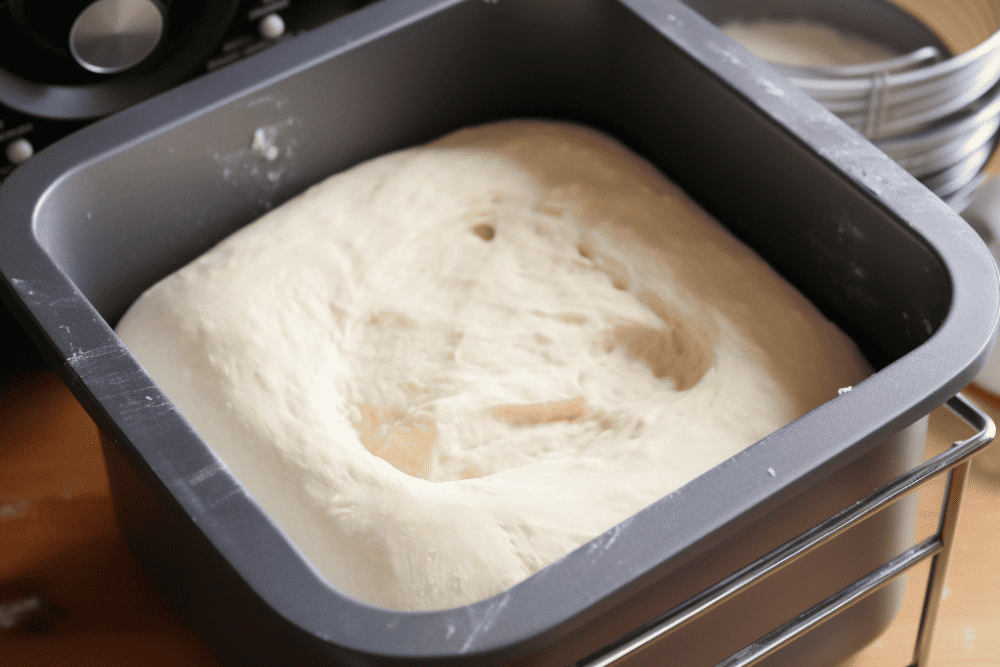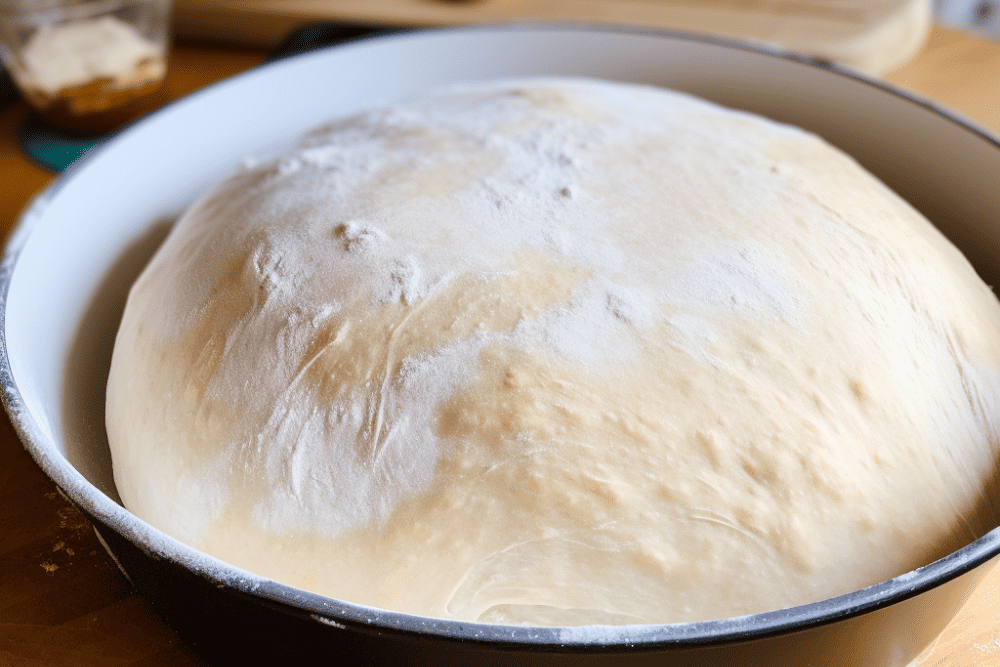A loaf of bread made in the bread machine collapsing can be a frustrating experience for any person who takes pride in being a home baker. You carefully measure and add all the ingredients from your bread machine recipe, select the right settings on your bread machine, and eagerly await the delicious aroma of freshly baked bread.
Instead of a beautiful loaf of fresh bread, you are met with a deflated, sunken loaf that resembles a sad pancake rather than a fluffy, well-risen loaf. This is just an example of what many bread bakers may experience at some point.
So, what causes this common issue, and how can you prevent it from happening again? Let's dive into the mystery and uncover the reasons behind the bread's collapse and help you reach your goal of baking the perfect loaf.

Yeast Issues, Temperature, and Humidity (Moisture Content) Can All Affect Bread Rising
Remember these factors while using your bread machine, and you'll have a higher chance of perfecting the baking cycle and creating perfectly risen loaves. Follow each step in your recipe carefully and review these common examples of mistakes that may happen when baking bread.
When making bread in a bread machine, it is important to use the right type of yeast and the right amount of yeast to ensure a proper rise. Checking the expiration date of the yeast is crucial to ensure it is fresh.
Using too much yeast or sugar can cause the bread to collapse, meaning there is excess carbon dioxide production.
Flour provides gluten, a protein in wheat that is vital for elasticity in bread. When making bread, pay attention to the wheat type and quality. Choose flour with a high protein content to ensure strong gluten development.

Mixing flour and liquid forms gluten, which traps carbon dioxide and allows the dough to rise. Ill-kneaded dough or weak gluten can result in your bread collapsing in the machine.
Liquids play a crucial role in bread making. Water helps create gluten by hydrating flour. Too much liquid results in a weak dough structure, which may collapse during baking.
When using a bread machine, precision is vital. Measure liquids accurately and adjust if needed, considering factors like humidity or the specific flour you're using. Additionally, salt affects the dough's moisture retention, and the right amount ensures proper gluten formation and yeast activity control.
When baking bread at high altitudes, ensure you adjust your bread recipe accordingly. High altitude affects the bread-making process, possibly leading to bread collapse. At elevated altitudes, reduce the yeast amount in the recipe and consider adding vital wheat gluten for better structure.

When Baking at High Altitudes, You May Wish to Cut Back on the Yeast
Monitor the dough during the kneading cycle, making necessary adjustments to achieve the perfect consistency.
Your guide to baking success at any elevation.
Bread machines offer various settings to ensure successful bread baking. Choose the appropriate setting for your specific bread recipe and type of yeast used. If your bread collapse issues persist, consider tweaking the oven temperature or kneading cycle duration.
Embracing these strategies will help eliminate bread collapse issues in your bread machine.
To achieve a flawless bread-making experience, pay attention to the factors that can affect your loaf. A perfect bread machine loaf requires precision as well as the right ingredients and conditions.
Choose the right type of flour for your recipe. Different flours have unique gluten contents, which can impact the final texture of your loaf. For a softer, fluffier loaf, use bread flour with a high gluten content. If your recipe calls for whole wheat flour, expect a more dense result.
Your bread pan and the way you load it can also influence the outcome. Make sure the bread pan is clean and free of any residue. When adding ingredients, place the yeast on top after adding the liquids, then the dry ingredients. This helps prevent the yeast from activating prematurely.
Next, consider the kneading process. Proper kneading helps develop gluten strands, which are crucial for a well-structured loaf.
Uneven gluten strands can lead to bread collapse and air pockets in your final product. Ensure your bread machine has a kneading cycle that adequately mixes the dough.
Keep the dough at the ideal temperature for fermentation. Too high or too low temperatures can adversely affect the yeast's activity, causing your loaf to deflate. Most bread machines have a pre-set temperature range, but try to place your machine away from drafts and other heat sources. 
Keep Your Dough a the Prescribed Temperatures During Fermentation to Avoid Any Potential Issues
Lastly, allow your freshly baked loaf to rest before slicing. Giving your bread time to cool helps it retain its structure and maximizes the enjoyment of your homemade creation.
Too much water in the dough can make loaves collapse when they cool.
Yeast issues, like insufficient or dead yeast, and incorrect ingredient measurements can cause bread to fall.
To prevent your bread machine bread from collapsing, maintain the appropriate dough temperature. Also, measure ingredients carefully, especially the amount of liquid added.
Yeast plays a crucial role in bread machine bread collapsing because issues with yeast, such as too little or dying yeast, may lead to weak dough structure. This results in a collapsed loaf after baking.
Yes, ingredients and measurements significantly affect bread machine bread collapsing. Not measuring ingredients correctly or adding too much liquid may contribute to a collapsed loaf.
Adjusting settings on your bread machine could help prevent bread from collapsing. It's essential to follow the manufacturer's guidelines and ensure you're using the correct settings for the specific type of bread you're making. This way, you can create the ideal environment for a well-structured loaf.
